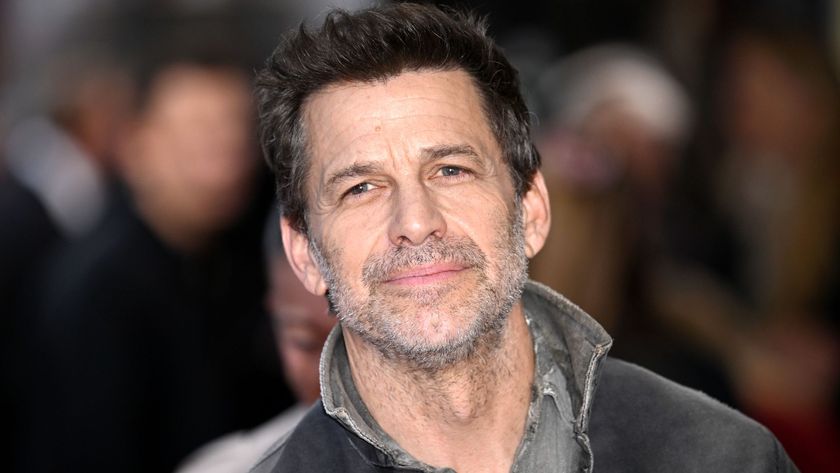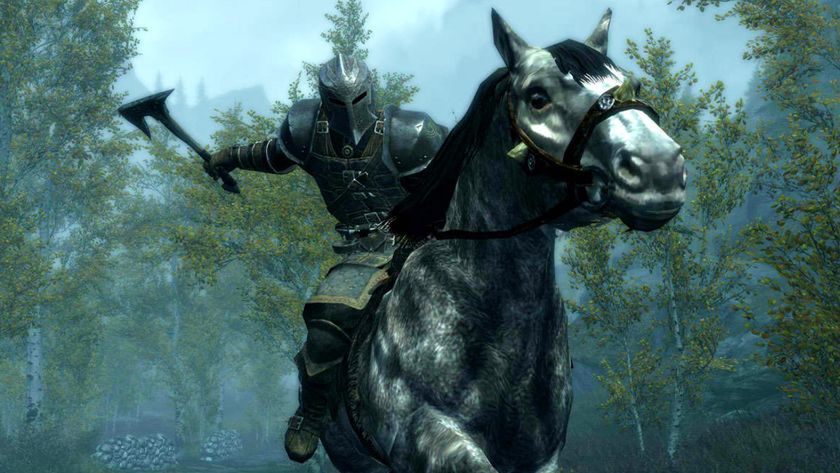The Story Behind The Box
Director Richard Kelly returns with another controversial trip-fest...
In the eight years since he made twisty mind-bender Donnie Darko , director Richard Kelly has been through the gamut of emotions.
First Donnie became a cult phenomenon; initially dismissed as arty nonsense on its release, then welcomed with open arms by cultphiles when it scuttled onto DVD.
After that came Southland Tales , cruising a tsunami of expectation and negative reviews. (Genius or ridiculous? Jury’s still out.)
Now, Kelly’s back with what is arguably his most personal film to date. A ‘70s-set thriller starring Cameron Diaz and James Marsden – not to mention a shockingly disfigured Frank Langella – The Box could see Kelly reclaiming his crown as King of Cult.
“This is an unpredictable business and I’m glad to be working,” says the filmmaker. “I’m just happy that the movie is finished and we’re getting a wide release. That’s something I’ve never had before.”
( Read our review of The Box here )
1. The Button
Sign up for the Total Film Newsletter
Bringing all the latest movie news, features, and reviews to your inbox
It all started with a magazine called Playboy.
In June 1970, that fine publication ran a short story by suspense author Richard Matheson called ‘Button, Button’.
A contemplative tale that peered fearfully into the future, it featured a young couple who are given a button by a stranger. Pressing said knob will boost their bank account with an immediate $200,000... but somewhere in the world a total stranger will drop dead.
Fifteen years later, a regenerated Twilight Zone turned the story into an episode for its first season. But Matheson, who provided the teleplay, was so miffed when they changed the ending that he used the pseudonym Logan Swanson instead, and washed his hands of the production.
Fast forward to 2004, and Richard Kelly is just putting the finishing touches to his director’s cut of Donnie Darko . Meanwhile, Eli Roth is enjoying success with his gory slasher Cabin Fever . United by their love of Matheson’s philosophical humdinger, the pair decide to co-write a film script adaptation, now with a re-tooled title: The Box .
“The film is going to be a hybrid of psychological thriller, horror and black comedy,” Kelly said at the time. “More than anything, it’s going to be a love letter to Richard Matheson.”
Pages bounced back and forth between the two multi-hyphenates, with Roth all set to direct. “It’s really about greed and sort of losing one’s soul and crazy, dark, horrible, strange things happening,” said Roth mid-scribble.
But the pair were determined to get the screenplay right, and the writing process took longer than they had ever intended. With both Southland Tales and Hostel screaming for the duo’s attention, The Box went adrift.
It wasn’t until post- Southland that Kelly got excited about the script again. But with Roth caught up in his horror dabblings, Kelly decided to take the helm and get The Box ’s motor running again.
“What fascinates me is the complexity of the instant- gratification, push-button society we live in today,” says the director.
“We toss off messages without much thought to the consequences or ramifications. It was a little different 30 years ago, when the story is set, and that’s one of the reasons why I wanted to keep it in the 1970s, when the story was first published.
Pushing a button was a more deliberate act back then. For Norma and Arthur, it could be the most deliberate act of their lives.”
Next: The Couple [page-break]
2. The Couple
Norma (Cameron Diaz) and Arthur Lewis (James Marsden) are an unremarkable American couple (apart from the fact that they’re played by Hollywood pros), living with the same fears and dreams as anybody on their prim suburban street. But they are struggling.
Arthur has failed to bag a promotion, a financial blow that has an emotional impact on the Lewis’ lives.
Their son will no longer be able to attend the expensive school that best suits him, while Norma now has to do without surgery that would remedy a lifelong and painful injury.
In other words, it’s the perfect time for them to be offered a seemingly perfect solution.
“Overall, funnily enough, I saw a beautiful love story in this movie,” says Diaz. “But I did like the existential part. Where are we coming from? Is there a hand that rests over us and kind of helps guide us? What is it that defines human beings?
"On a day-to-day basis we make decisions that have repercussions. This decision in particular being a moral one. I mean, it’s one of those really deep human questions. What would I do? Would I really take another human’s life?”
For Kelly, expanding Matheson’s original short story to fit the big screen proved to be one of the biggest challenges, not least with regard to Norma and Arthur.
In order to fill out their personalities, he returned to familiar ground – his own parents. Kelly’s own father served as a NASA engineer for 15 years, while his mother suffered the same injury that plagues Norma.
“It was important that Norma and Arthur are decent, likeable, honest people, the kind of people audiences can identify with,” Kelly explains.
“That being pretty much the definition of my own parents, it seemed natural to integrate parts of their lives into the characters.”
James Marsden, the last actor to be cast just before filming commenced, knew where the heart of the film lay...
“You have to believe in their love and their marriage or everything else is ornamental,” he says. “At the heart of the movie is the relationship between Norma and Arthur, and the rollercoaster ride they go through together. Everything that happens to them, however difficult, brings them closer together.”
Next: The Box [page-break]
3. The Box
Executive Producer Sean Mickittrick refers to The Box as “a classically told suspense tale and character study – with a twist. Any time you’re dealing with money, it can affect people’s morality or ethics. But you have to remember there are always repercussions”.
Into Norma and Arthur’s lives comes the towering, enigmatic Arlington Steward (Frank Langella), whose good manners and courtesy hide an affinity with the dark side of human nature.
“This is a man who has been struck by lightning and he’s obviously not the same as he was before,” says Langella. “That’s really the only thing that needs to be revealed about him. It’s the only thing we are sure about.”
Offering the couple a wooden box containing a red button, Steward calmly explains what will happen when and if they decide to press it. (In a sign of the times, the couple will now receive $1 million, rather than $200,000).
“We felt that Steward should be a very elegant salesman, someone with the charisma to make this offer sound attractive,” says McKittrick. “Frank certainly has charisma. He has the ability to enrapture and bring you into his world as he speaks.”
From this moment on, the Lewis’ lives are incontrovertibly altered. They are decent people, living decent lives, trying to do the best they can. But could even the most well-meaning of people be tempted by a better life, no matter what the consequences?
“We live in a world where we can achieve almost anything with the press of a button,” says Marsden. “And I know it’s supposed to be making our lives easier, but something tells me we may be paying a higher price for it in the long run.
" The Box is a story about one couple’s experience, but it could have a societal reach.”
Next: The Setting [page-break]
4. The Setting
In a time when technology is getting smaller by the day, and ever more integral in our daily lives, Kelly made a conscious decision to set his thriller in the time in which it was originally written by Matheson.
This allowed not only a degree of timely tension (Norma can’t simply jump onto Wikipedia the second she receives the Box), but also a setting that resonated with the themes of the film.
Most important to the year 1976, of course, was NASA’s successful landing of a robotic unit on Mars.
This triumph of human endeavour and technology reflects an era that was just waking up to the possibilities of electronics – and a feeling of both hope and fear at the things it tentatively promised.
“Embedding our story in the historic setting of the Viking Mission meant presenting Langley in what some would call its glory days,” says Kelly.
“A lot of it hasn’t changed significantly from the way it looked in the 1970s: the same interesting architecture, the gantry, the rocket sled, the wind tunnel where they tested parachutes, the media briefing room... We tried to photograph as much of it as we could in a way that felt organic to the story while also paying tribute to what happened there. We were granted unprecedented access and wanted to make the best of it.”
The NASA facilities had to match the look and feel of the 70s. Lucky for Kelly, NASA veteran and author Gentry Lee provided him with numerous resources, including a book filled with candids from the NASA facilities in 1976.
Meanwhile, the Lewis’ house was built on a soundstage, and played on the notion of entrapment by featuring boxes within boxes.
“What the house tells you is that these people don’t have a lot of money,” says production designer Alec Hammond. “It’s nice, but not huge. They’re a little bit pushed beyond their means.”
Kelly also had fun including blink-and-you’ll-miss-‘em televisual references to fully flesh out his '70s universe, among them clips from What’s Happening! and Alice .
“The sitcoms were sort of a way of reminding the audience of the absurdity of life,” Kelly explains.
“There is a fundamental absurdity to the premise of this film that I think is quite wonderful, for me at least. I wanted to remind people that there is going to be a dark, twisted sense of humour running throughout the course of this entire film. Those sitcoms were a good way of reminding you of that because they are all fairly ridiculous. But I love those shows!”
Next: The SFX [page-break]
5. The SFX
This being a Richard Kelly production, there were always going to be some kind of special effects involved.
For his third picture, though, Kelly merely required a light smattering of make-up and a dash of CGI to fully realise Arlington’s facial disfigurement.
“As the victim of a lightning strike, Arlington’s face is a vivid reminder of what he’s gone through,” says visual effects supervisor Thomas Tannenberger. “On Arlington’s face there’s a lot of scar tissue. You will actually be able to see through his teeth into his mouth because his left cheek is missing.”
But instead of layering up the make-up on Langella’s face, essentially giving the less realistic effect of ‘adding more’, Kelly and co used CGI to slice the flesh away for the maximum effect.
“Rather than piling on layers of prosthetic rubber and traditional make-up, we digitally removed that portion of his face,” says Kelly. “By painting his face green and applying motion-capture tracking dots to it, we created an anchoring mechanism through which we could then imbed the digital make-up, the disfigurement itself, directly onto Frank’s face and not interfere with the way he talks or moves.”
“Conventionally, it’s either a pre-process or an after-process,” says Tannenberger, “where you record an actor’s performance in a vacuum and then transfer that to a CGI avatar of him or some other creature. In our case, it was done live, on-set.”
For Langella, the make-up was a breeze. Compared to his prosthetic-heavy roles as Skeletor in Masters of the Universe (anybody remember that?!) and Nixon for Frost/Nixon (for which he spent two hours in the chair every single day), Langella spent a mere 40 minutes in the make-up department daily for The Box .
“That first day, after we got past all the connect-the-dots jokes, nobody thought anything about it,” the actor remembers. All in, it took post-production eight months to perfect the digital work on his face.
Next: The Wardrobe [page-break]
6. The Wardrobe
“The clothes were tight [in the '70s] and we’re not used to that nowadays,” laughs costume designer April Ferry.
“When we put an outfit onto an extra they’d often say it was a size too small. Well, it wasn’t too small. That’s how we wore our clothes back then!”
Applying the same amount of stylistic restraint to the wardrobe selections as Hammond applied to the set designs, Ferry plumped for the least showy colours, patterns and trends of the time.
So even if the actual fitting of the costumes felt a little awkward at first, the look was spot-on, with earthy, muted tones governing the characters’ wardrobe.
Langella’s singularly gentlemanly Steward was another matter, though.
He was dressed very elegantly with “beautiful English fabrics”. And in collaboration with Langella, Ferry took her actor to see renowned New York tailor Leonard Logsdail before selecting the classic Homburg hat to finish off the look.
Next: The Release [page-break]
7. The Release
The Box hit screens in the USA on 30 October, 2009. So far it's garnered a mixed response, with some proclaiming it as fresh and original as the Twilight Zone episode that preceded it, while others blamed a left-field third act for bringing down a film that had showed much promise.
Business as usual for the typically opinion-polarising Kelly.
Kurt Loder at MTV showered back-handed praise on the film, stating that The Box is "an overlong mess of a movie that's nevertheless eerie and unsettling. You walk away from it feeling befuddled, but definitely weirded-out."
But Kelly can count fans in the New Yorker 's David Denby and the ever-dependable Roger Ebert.
Writes Denby: "Kelly, as he did in Donnie Darko , avoids obvious scare techniques. Instead, he makes the bizarre, the surreal, and the frightening emerge from normal reality." Meanwhile, Ebert notes that "if you make a preposterous movie that isn't boring, I count that as some kind of a triumph".
Kelly remains pragmatic. “As much as it’s based on larger concepts, in many ways it’s the most personal of my three films,” he says.
“My parents were the ones who introduced me to these kinds of films, the Hitchcock-style psychological thrillers that are still my favourites. Those are the movies that they loved, and they became the movies that I love.”
The director's third film also represents his first collaboration with a Hollywood studio, something that he had moved mountains to avoid doing with his previous films.
Now, though, Kelly appears to have changed his tune, and is actively looking to continue working within the studio system.
“I obviously need a hit, a theatrical hit,” the director told Suicidegirls.com earlier this year. “I hope to keep working inside the studio system, and with my new script I’m actually working very hard to make sure that it’s as commercial and as mainstream as it can possibly be.
"But at the same time, Donnie Darko was a huge hit on DVD and it’s a movie that, when it first came out, a lot of people said, ‘This is a mess, it’s unreleasable, it doesn’t make any sense.’ Well, it clearly started to make a lot of sense to a lot of people, and that’s something that I’m trying to hold onto, that formula, because I think it’s exciting.
I hope The Box will function that way for people. While there is mystery and intrigue and the movie does leave you with your head spinning, I hope it’s also something that people are able to access and understand.”
Watch this space.
The Box is released in the UK on 4 December, 2009
Like This? Then try...
- The Story Behind Paranormal Activity
- The Story Behind Gremlins
- James Cameron Interview: On His Own Movies
Sign up for our free weekly newsletter here .
Follow us on Twitter here .
Josh Winning has worn a lot of hats over the years. Contributing Editor at Total Film, writer for SFX, and senior film writer at the Radio Times. Josh has also penned a novel about mysteries and monsters, is the co-host of a movie podcast, and has a library of pretty phenomenal stories from visiting some of the biggest TV and film sets in the world. He would also like you to know that he "lives for cat videos..." Don't we all, Josh. Don't we all.













